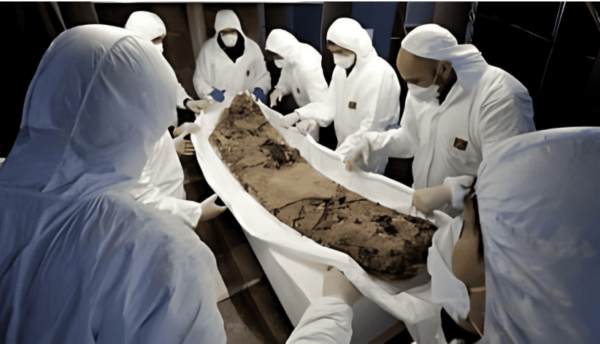In archaeology, where each find connects our present with the past, the handling and conservation of historical artefacts requires solutions based on precision and safety.
In this context, technical foams have become indispensable thanks to their ability to adapt to the specific needs of restoration, packaging and conservation.
Polyethylene foam for archaeology and restoration
In 2012, an exceptional case highlighted the importance of technical foams in archaeology: the remains of King Peter I the Great were extracted from his tomb using an innovative Plastazote® foam solution, developed specifically for their handling and restoration.
This project, led by the History Museum of Catalonia and the Department of Culture of the Catalan Government, used a three-dimensional counter mould made with Plastazote® to ensure that the remains were kept protected throughout the process.
Why was Plastazote® used? The unique properties of this cross-linked polyethylene foam make it ideal for the handling and conservation of delicate pieces:
- Lightness and strength: It facilitates transport without adding unnecessary weight, ensuring the structural protection of the pieces.
- Adaptability: Its flexible structure allows for the creation of customised three-dimensional moulds, adjusting perfectly to the contours of each object.
- Free of contaminants: Plastazote® is chemically inert, which prevents adverse reactions with sensitive historical materials.
- Durability: It withstands extreme humidity and temperature conditions, ensuring constant protection over long periods.
These characteristics guaranteed the integrity of the monarch’s remains and highlighted the potential of these foams in multiple applications within the field of restoration.

Packaging for archaeology
From delicate ceramics to fragments of frescoes or ancient manuscripts, each piece requires a packaging system that protects its integrity and facilitates its handling.
This is where technical foams come in, designed to create customised solutions that meet the most demanding requirements of transporting our history.
What makes ZFoam foams an ideal choice for archaeological packaging?
- Insulation and cushioning: The closed cell structure of polyethylene foams protects objects against vibrations, shocks and thermal fluctuations during transport.
- Cutting and customisation: The foams can be moulded and cut to size, creating niches that fit each piece perfectly, reducing the risk of movement.
- Sustainability: ZFoam manufactures recyclable foams, contributing to an archaeology that respects the environment and preserves our past and future.
Whether in excavation projects at historical sites or in the transfer of museum collections, foams are the best solution for the safety of the pieces.
ZFoam at the service of historical heritage
Technical foams, such as Plastazote®, have proven to be a key tool in archaeology and restoration. The handling and packaging of historical pieces and unique finds makes them indispensable for protecting our legacy.
And thanks to our experience and knowledge of technical foams, combined with an understanding of the needs of archaeology, we are able to develop solutions that contribute to the protection of historical heritage.
Do you have an archaeological, transport or restoration project?
Contact us and discover how our team is ready to advise you and offer you solutions designed to meet the most demanding requirements in the mission of caring for and preserving history.
“Archaeology depends on the findings and the tools we use to preserve them.”







